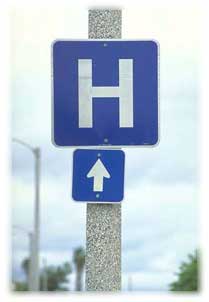More more more shenanigans in DC health care planning

I write quite a bit about the process behind "the Growth Machine" which tends to ugly and manipulative. Some organizations and land use attorneys are better than others (I refer to one land use lawyer as "The Velvet Fist" but that being said, I think she's pretty straightforward and recommends that her clients do the right thing, albeit while trying to minimize what the client has to pay out...).
Generally, the worse the project, the more consulting groups, etc., that pile on, I mean get the opportunity to help the various organizations communicate better with the public. The latest developments in the National Capital Medical Center project, particularly with race-based appeals, reminds me of the sorry affair 18 years ago, when race-based appeals were used to defeat a DC recycling referendum that would have instituted deposits on beverage containers (a huge source of litter).
(And as Colbert King wrote in two columns recently, the more odious the project, the more odious the lobbyists that represent the project. As he wrote, "The intersection of lobbyists and city lawmakers could have a direct bearing on this year's contests for D.C. mayor, the city council and the presidency of the D.C. Board of Education."-- How the Game Gets Played in D.C. (Part 2) and his first piece, How the Game Gets Played in D.C. (January 21, 2006, Page A19).)
Eric Rosenthal, an emergency medical physician, has been writing about the NCMC issue in themail. I have taken the liberty of reprinting his latest missive:
On January 12, Councilmember Vince Gray and representatives from the Williams administration, Howard University, and the Walker Marchant Group — a self-described “communications boutique specializing in crisis communications, issue management, community relations, public affairs and reputation management” — met with supporters of the National Capital Medical Center. Out of that meeting came a new organization, Citizens for the National Capital Medical Center (CNCMC). Sadly, according to at least one attendee, some of the rhetoric emerging from the meeting included appeals to racial divisiveness and threats to defeat elected officials who support the Certificate of Need Process or oppose the National Capital Medical Center, presumably including both leading mayoral candidates.
The DC Primary Care Association, the DC Hospital Association, the DC Medical Society, the DC Fiscal Policy Institute, the Hill East Waterfront Action Network, ANC 6B, the Capitol Hill Restoration Society, the Washington Times, the Washington Post, the DC Examiner, the Washington Business Journal, several councilmembers from both sides of the Park, Jonetta Rose Barras, Dorothy Brizill, Alice Rivlin, at least one of the city’s own consultants, and many other health experts and citizens have raised serious and fundamental questions about the National Capital Medical Center, questions that remain unanswered. Rather than resorting to intellectually lazy and divisive appeals to race and political threats, I hope the CNCMC will make a serious attempt to demonstrate that the National Capital Medical Center is needed and that it would make Washingtonians healthier. That is where the debate should be, but the advocates have yet to try to make that case.
The next meeting of Citizens for the National Capital Medical Center is tomorrow, Monday, January 30, at 6:30 p.m., at the Marshall Heights Community Development Organization, 3939 Benning Road, NE. The meeting is billed as only for supporters of the National Capital Medical Center. On a related note, the city and Howard should disclose the list of consultants they have used in this process, the cost for each, how much Howard is being reimbursed, and whether any of the contracts was put out to competitive bid.
And, as I have written, health care and hospital issues in the area are regional issues that transcend political boundaries, given the financial problems with the Dimensions Health Care system in Prince George's County, Maryland. The Washington Business Journal, in "Gasping for air," editorializes about this in their latest issue:
The Cheverly-based nonprofit organization that runs the county-owned hospitals in Prince George’s County needs to find money – and must find it before the end of March. Dimensions has lost more than $50 million since 1999. The management company, which oversees Prince George’s Hospital Center, Laurel Regional Hospital, and Bowie Health Campus, has gone so far as to develop contingency plans to close the hospitals by April if additional assistance can’t be found. While the state and county have to step up and offer any necessary assistance to keep the much needed hospitals from turning away patients, the potential partnership between the University of Maryland Medical System and Dimensions appears to be an ideal long-term solution. The UMMS would likely pump new life into a health care system that Prince George’s County and the state have allowed to fall into serious disrepair. Besides being what many see as an ideal partnership for the county and the university, the deal quite possibly is the last hope for the residents of Prince George’s County.
It's amazing to me that these two planning processes are occuring simultaneously, with likely no connection between the projects.
Index Keywords: civic-engagement; health-care-planning



0 Comments:
Post a Comment
<< Home